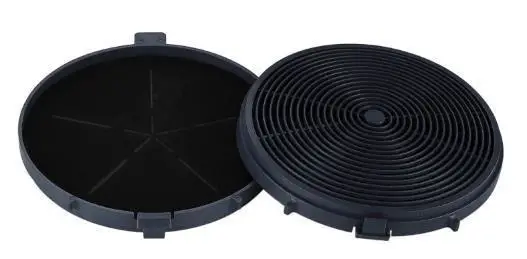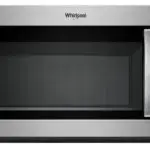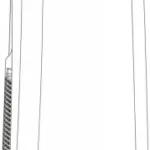

USER MANUAL

CANOPY COOKER HOOD
eiQ52GCANOPY
Thank you for choosing your electric cooker hood. This instruction manual is designed to provide you with all required instructions related to the installation, use and maintenance of the appliance. In order to operate the unit correctly and safely, please read this instruction manual carefully before installation and usage.
SAFETY PRECAUTIONS
Whilst this product is compliant with all safety requirements, incorrect or inappropriate use can lead to both personal injury and potential damage to property. Please read the contents of this instruction booklet thoroughly before fitting or using this appliance.
- The cooker hood must be installed in accordance with the installation instructions and all measurements followed.
- All installation work must be carried out by a competent person or qualified electrician.
- The unit must be connected to an earthed power supply. If venting externally, make sure the ducting has no bends sharper than 90 degrees as this will reduce the efficiency of the cooker hood.
- The cooker hood is for domestic use only and is not designed for commercial use. It should only be used for the purpose it was intended – to extract vapors and cooking odors.
- Do not flambé or use an open flame under the cooker hood.
- Do not try to use the cooker hood without the grease filters or if the filters are excessively greasy! They should be cleaned regularly (see “Maintenance”) or replaced as necessary.
- The extraction fan must be level to avoid grease collection at one end, as this could cause a potential fire risk.
- Do not leave frying pans unattended during use because overheated fat or oils might catch fire.
- If the cooker hood is damaged, do not attempt to use it.
- If the supply cord is damaged, it must be replaced by the manufacturer, its service agent, or a similarly qualified person in order to avoid a hazard.
- This appliance can be used by children aged 8 years and above and persons with reduced physical, sensory or mental capabilities or lack of experience and knowledge if they have been given supervision or instruction concerning the use of the appliance in a safe way and understand the hazards involved.
- Children shall not play with the appliance. Cleaning and user maintenance shall not be made by children without supervision.
- Children should be supervised to ensure that they do not play with the appliance. It is not a toy.
- The plug must be accessible after installation for isolation in case of an emergency – or an appropriate fused switch if the unit is hard-wired to the mains via a spur.
- The minimum distance between the surface of the hob and the lowest part of the hood should be at least 65cm. A distance of between 65cm and 75cm gives peak efficiency.
- The air must not be discharged into a flue that is used for exhausting fumes from appliances burning gas or other fuels.
- When the hood is vented externally and used with appliances that burn fuel (e.g. gas, oil, wood) the area must be sufficiently ventilated to ensure safe operation. Fresh air must be allowed to freely enter the room to prevent a partial vacuum.
- A partial vacuum can starve the heating appliance of oxygen, impairing combustion. It can also prevent toxic fumes from leaving the room or can cause fumes to be sucked into the room from outside.
- Safe operation is only possible when the partial vacuum within the working area does not exceed 4 Pa (0.04 bar). This can be achieved by ensuring air is able to enter the room from outside through a suitably sized opening that cannot be sealed during operation. A number of alternative solutions are available to ensure this. If in any doubt, professional advice should be sought.
- Regulations concerning the discharge of air have to be fulfilled.
- There is a potential fire risk if cleaning is not carried out in accordance with the instructions.
- Clean your appliance periodically by following the method given in the chapter MAINTENANCE
- If used in recirculation mode, charcoal filters (available separately) can be used to trap odors and must be replaced at least once a year depending on how frequently the cooker hood has been used.
- For safety reasons, please use only the same size of fixing or mounting screw, which is recommended in this instruction manual.
- Warning: Failure to install the screws or fixing device in accordance with these instructions may result in electrical hazards
CAUTION: Accessible parts of the hood can become very hot during use with cooking appliances, whether in use or not, due to heat rising from the hob. Sufficient time should be allowed for the unit to cool before touching either the housing or the grease filters.
V-FLAP INSTALLATION
 DIMENSIONS
DIMENSIONS

OPTIONS FOR VENTING

EXTERNAL VENTING
If you have an outlet leading outside, your cooker hood can be connected as shown in the diagram using a flexible exhaust hose (not supplied). Any suitable extraction duct
(enamel, aluminum, flexible pipe, or other inflammable material with an interior diameter of 150mm) can be used. An adaptor is also supplied to enable you to connect your hood to pre-existing 120mm diameter ducting. Consideration of the route of the vent pipe should be made prior to installation. Please note: the performance of the hood may be affected if the diameter of the pipe is reduced, or if the airflow is restricted.

RECIRCULATION
The cooker hood also supports the recirculation of air, using filters to clean the air before expelling it through the vent holes in the side of the chimney. When installing the unit in this configuration, carbon filters should also be used to remove odours from the air. Details of sourcing and fitting the filters can be found in the Carbon Filter section of this manual.
INSTALLATION
Before installation, ensure power is not connected.
 1. Open the catch of the metal filter door, remove the filter.
1. Open the catch of the metal filter door, remove the filter.

2. Remove the stainless-steel frame by removing the 4 x 4x10mm screws.

3. Remove the lid of the terminal box and unplug the wires to the hood controls. Then unplug the wires to the lights.

4. Fasten the Hood into the cabinet using the 12 x 4x18mm screws.

5. Screw the stainless-steel frame back into place using the 4 screws removed as described in step 2 above

6. Reconnect the wires to the controls and lights.

7. Replace the metal filter, pressing in until it clicks into place.

8. Install the air outlet pipe(optional).
OPERATION

| Button | Function | Remarks |
 |
Turns the lights on or off | |
 |
Decreases the motor speed | When  are you on are you on |
 |
Displays fan speed (1, 2, or 3) | When the fan is running |
| Displays “0” | Delayed shutdown mode or standby mode | |
| Increases motor speed | When on on |
|
 |
Turns motor on | When  is off is off |
| Automatic shutdown after 3 minutes | When is on is on |
|
| Turns motor off | When |
|
 |
Turns the motor and lights on | When |
| Cycles motor speed (1, 2, 3, 1, 2, 3) | When |
|
 |
Enters delayed shutdown mode
(automatic shutdown after 3 minutes) |
When |
| Turns the motor and lights off | When |
CLEANING AND MAINTENANCE
Before cleaning, switch the unit off and disconnect the power. Use a soft cloth moistened with mild soapy water or household cleaning detergent. Never use metal pads, chemicals, abrasive material, or stiff brushes to clean the unit.
NOTE: Do not use a steam cleaner to clean the hood as electrical components could be damaged or short-circuit as a result.
MONTHLY CLEANING FOR METALLIC ANTI-GREASE FILTER
IMPORTANT NOTE: Clean the filter every month; an excessive build-up of grease can become a fire hazard. The filter collects grease, smoke and dust, so the filter
directly affects the efficiency of the cooker hood. If it’s not cleaned, the grease residue (potentially flammable) will saturate on the filter.
Clean it with a soft nylon brush in a mild solution of warm water and a small amount of washing-up liquid. Washing up liquid alone should not be used. After cleaning,
allow the filter to drain and then dry thoroughly.
The grease filter may also be cleaned in a dishwasher; using a 60°C program, with the filter upright (short sides upright) in the lower basket. Please be aware some dishwasher cleaning agents can permanently discolor the filter, though this will not affect its performance.
Replacement grease filters are of the universal type available from many household and DIY stores.
STAINLESS STEEL
The stainless steel must be cleaned regularly (e.g. weekly) to ensure long life expectancy.
Dry with a clean soft cloth. A specialized stainless-steel cleaning fluid may be used. Ensure that wiping is done along with the grain of the stainless steel to prevent any unsightly crisscross scratching patterns from appearing.
CONTROL PANEL SURFACE
The control panel inlay can be cleaned using warm soapy water. Ensure the cloth is clean and well wrung before cleaning. Use a dry soft cloth to remove any excess moisture left after cleaning.
Using neutral detergents and avoid using harsh cleaning chemicals, strong household detergents, or products containing abrasives, will affect the appliance’s appearance and potentially remove any printing of artwork on the control panel and will void the manufactures warranty.
GREASE MESH FILTER
The mesh filters can be cleaned by hand. Soak them for about 3 minutes in water with a mild detergent then brush it gently with a soft brush. Do not apply too much
pressure, or this may damage them. Leave to dry naturally out of direct sunlight.
Filters should be washed separately to crockery and kitchen utensils. It is advisable not to use rinse aid.
INSTALLING GREASE MESH FILTERS
To install filters:

- Angle the filter into the slots at the back of the hood.
- Push the button on the handle of the filter.
- Release the handle once the filter fits into position.
- Repeat to install all filters.
CARBON FILTER (not supplied)
Activated carbon filters can be used to trap odours. The activated carbon filter should be changed between three and six months according to use. The installation procedure of activated carbon filters is as below.
- Align the protruding lug of the carbon filter with the slot in the fan (see arrow A below)
- Push the other side of the carbon filter toward the fan to make it flat (see arrow B), and then press the filter into the fan.
- If you want to remove the filter, pull the fastener of the filter and remove it by turning anticlockwise.


NOTE:
- Make sure the filter is securely locked. Otherwise, it may become loose and be dangerous.
- With activated carbon filters fitted you may notice is suction power is slightly reduced.
Filters for eiQ52GCANOPY
| Grease Filter | eiqgf7628 |
| Carbon filter | eiqmidcarbon |
BULB REPLACEMENT
The bulb must be replaced by the manufacturer, its service agent, or similarly qualified persons.
Always switch off the electricity supply before carrying out any operations on the appliance. When handling the bulb, make sure it has completely cooled down before making contact with the hands.
When handling bulbs hold with a cloth or gloves to ensure perspiration does not come in contact with the bulb as this can reduce the life of the bulb.
- Remove the grease filter.
- Put one hand into the cavity to gently push out the LED light, and use the other hand to support the light and pull it out, then pull out the light cable.
- After changing the lamp, plug in the lamp cable, and return the lamp into the lamp holder.

The ILCOS D code for this lamp is: DSS-1.5-S-33.2/120
| LED Modules | Round lamp |
| Max wattage | 2 x 1.5 W |
| Voltage | DC 12V |
TROUBLESHOOTING
| FAULT | CAUSE | SOLUTION |
| Light on but the fan does not work | The fan blade is jammed. | Switch off the unit. Repair to be œrried out by qualîfied service personnel only. |
| The motor is damaged. | ||
| Bath light and fan do not | Light bulb blown | Replaœ the bulb with correct rating. |
| Power œrd loose | Plug into the power supply again. | |
| Excessive Vibration | The fan blade is damaged. | Switch off the unit. Repair to be carried out by qualîfied service personnel only. |
| The fan motor is not fixed tîghdy. | Switch off the unit. Repair to be carried out by qualîfîed service personnel only. | |
| Suction
performance reduced |
Clean or replace grease 1ilters. | |
| The distance between the
unit and the cooking plane is too great. |
Readjust the distance to between 65crn and 75cm. |
INFORMATION FOR DISMANTLING
Do not dismantle the appliance other than shown in the user manual. The appliance cannot be dismantled by the user. At the end of life, the appliance should not be disposed of with household waste. Check with your Local Authority for recycling advice.
electriQ UK SUPPORT
www.electriQ.co.uk
Call: 0330 390 3061
Office hours: 9 AM – 5 PM Monday to Friday
Unit J6, Lowfields Business Park Lowfields Way, Elland
West Yorkshire, HX5 9DA
 Recycling facilities are now available for all customers at which you can deposit your old electrical products. Customers will be able to take any old electrical equipment to participate in sites run by their local councils. Please remember that this equipment will be further handled during the recycling process, so please be considerate when depositing your equipment. Please contact the local council for details of your local household waste recycling centers.
Recycling facilities are now available for all customers at which you can deposit your old electrical products. Customers will be able to take any old electrical equipment to participate in sites run by their local councils. Please remember that this equipment will be further handled during the recycling process, so please be considerate when depositing your equipment. Please contact the local council for details of your local household waste recycling centers.
PRODUCT FICHE
| Symbol | Value | Unit | |
| Model identification | eiQ52GCANOPY | ||
| Annual Energy Consumption | AEChood | 56.0 | kWh/a |
| Time increase factor | f | 1.7 | |
| Fluid Dynamic Efficiency | FDEhood | 9.3 | |
| Fluid Dynamic Efficiency class | Class E | ||
| Energy Efficiency Index | ENIhood | 86.7 | |
| Energy Efficiency class | Class D | ||
| Maximum air9ow | Qmax | 394.2 | m3/h |
| Measured air flow rate at the best efficiency | QBEP | 227.1 | m3/h |
| Measured air pressure at best efficiency point | PBEP | 128 | Pa |
| Measured electric power input at best efficiency point | WBEP | 86.6 | W |
| Nominal power of the lighting system | WL | 1.5 x 2 | W |
| Average illumination of the lighting system on the cooking surface | Emiddle | 162 | lux |
| Measured power consumption on-off mode | Po | N/A | W |
| Measured power consumption on standby mode | Ps | W | |
| Sound power level | LwA | Highest setting: 64
Lowest setting: 56 |
dB |



